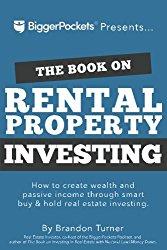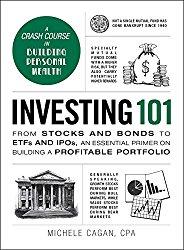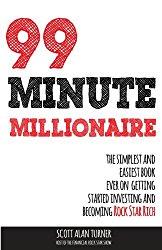Let's return to our young investor, Frank. Remember that he started out in investing. He used the traits I speak of under the Stock Picking posts to identify three good candidates. He then decided which stock of the three looked to be the best value at the time and purchased 100 shares. He then continued to save and each time he raised a few thousand dollars, bought more shares of the one stock of the three that appeared to be the best value. Eventually, after a period of about a year of steadily adding money and investing, he has amassed between 500 and 1000 shares in each stock. Let's look at what he should do next.
Let's say that the first stock he bought, after he had 200 shares, fell about $4 from where he'd bought it, so he was looking at a loss of $800. Frank's reaction to this is an indication of whether he has the emotional makeup needed to be an investor. If he was very nervous because the stock had dropped, individual stock investing may not be for him and he should instead start buying mutual funds which have smaller fluctuations. As long as he continued to invest regularly, he would be just fine in the long run with mutual funds as well. If instead though he remained calm, continued to evaluate the stock to see if there was something he'd missed in his analysis, and then made an informed decision, he has the signs of a good investor.


Let's say he has the latter temperament. In looking at the stock again, he decides that the reasons for which he bought the company are still valid, and sees that most of the stocks in that sector are moving down together. Furthermore, he decides that the stock he picked has the best chances of all the similar companies in the sector for doing well long-term. The company has the best management and is a "best of breed". He realizes that he has picked a good stock, but it is getting punished along with the others (when stocks go down, the good are sometimes dragged down with the bad - the bad just tend to stay down). He knows that when the sector recovers his stock will spring up - that the current prices are just what the market is willing to sell the shares for currently, and they are on sale. He continues to invest in the company, taking advantage fo the lower costs, until he reaches 1000 shares.
Let's say now that another of the stocks he was buying has gone up 50% over the year. He now has three positions as follows:
- 500 shares of XYZ, $5 above where he bought it, with the position worth $12500
2. 1000 shares of QNX, $2 below the average price he paid for it, worth $18000
Get Your Jam On and Help The Small Investor Keep GoingBuy Your New Tools Here and Help Keep the Small Investor Going

3. 600 shares of GOOD, $15 above the average price he paid for it, worth $45000
Looking at his portfolio, he realizes that his position in GOOD is larger than he would like to lose. He knows that any stock can suddenly fall due to bad news, scandals, and other reasons. He therefore decides to take some of his profits. He sells 200 shares of GOOD, freeing up $15,000, which he then uses to buy more shares of XYZ. Now if GOOD continues to grow, he still has a large position and will continue to make more profits. If something happens to the company though, he will have taken some profit and therefore won't lose the whole position. The two lessons to learn here are:
1)Don't sell completely out of your winners unless something has fundamentally changed at the company. Good companies tend to keep growing. Also, if you keep selling your winners and holding your losers, you'll end up with a portfolio full of losers.
2) If a position gets too large, such that you are no longer comfortable with the possibility of losing the entire position, cut it back and reallocate.
We'll continue to follow Frank's progress in later posts.







Have a question? Please leave it in a comment. Follow me on Twitter to get news about new articles and find out what I'm investing in. @SmallIvy_SI
Disclaimer: This blog is not meant to give financial planning or tax advice. It gives general information on investment strategy, picking stocks, and generally managing money to build wealth. It is not a solicitation to buy or sell stocks or any security. Financial planning advice should be sought from a certified financial planner, which the author is not. Tax advice should be sought from a CPA. All investments involve risk and the reader as urged to consider risks carefully and seek the advice of experts if needed before investing.
